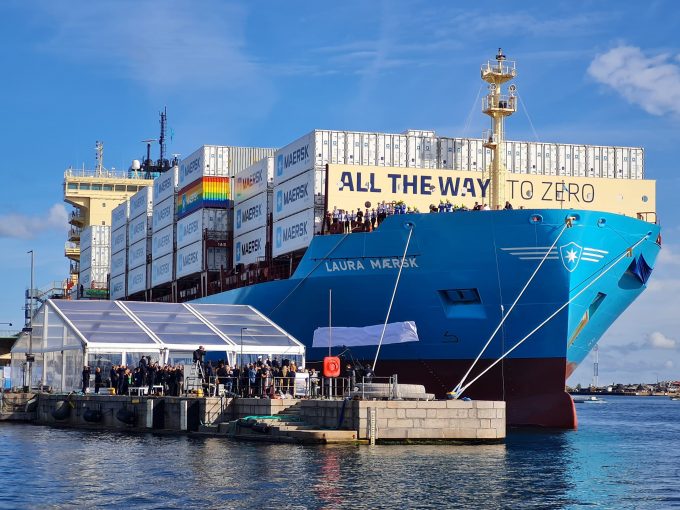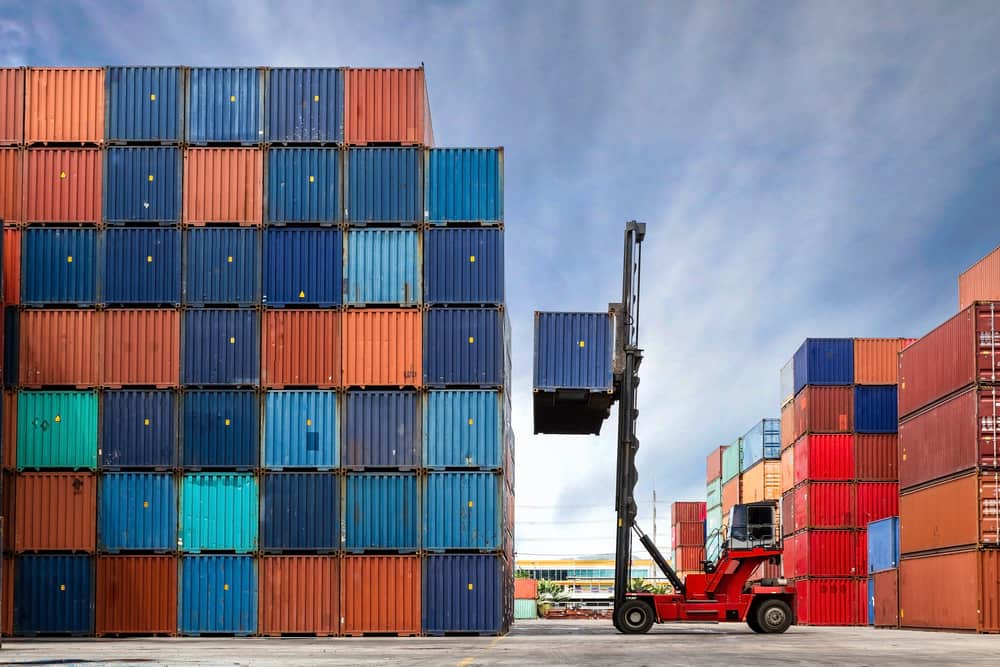
5 game-changing shipping innovations of today & tomorrow
he shipping industry around the world has always shown a possibility for futuristic innovations. While limited to theory and minimal application, ideas like automation, applications of AI, newer routes, and eco-conscious practices were always around, waiting to get into frontline execution.
The pandemic, however, changed the game! Shipping companies in all sectors from local delivery & freight to international shipping and intermodal delivery, went out of their way to apply these ideas and adapt to the changing world order.

The pandemic overstrain came as a blessing in disguise to the industry and opened up avenues for them to provide a much more competent service on a larger scale.
- Newer technology and ideas raised shipping standards all around the world
- Consumers expect a whole new benchmark of faster and more informed service
- Retail businesses have gradually turned to much more cost-effective shipping options
- Above everything, benefactors and stakeholders, today, respect the ecology more than before and intend to work with a much more careful conscience
Catering to these needs, come these innovations! While some are still in the beta phase and others are already out there, Qalara brings you a list of all such disruptive ideas that are to change shipping for the better.
Eco-conscious initiatives
Eco-centric practices have become the need of the hour for shipping. As this is a very crucial industry, contributing to more than 80% of global trade, the hours on road, sea and air respectively are higher. The whole sector combined contributes to around 3% of global CO2 emissions. It is estimated to rise to a staggering 17% by 2050 if left unregulated. Oil spills, threats to the marine ecology, noise pollution, packaging waste and many other concerns are just waiting to be solved actively.

1. Methanol-fueled ships
Methanol was marketed as an alternate solution for vehicle fuel back in the 90s. But, only as recently as 2021 did the idea of using methanol-fueled cargo ships gain considerable attention.
Methanol is extracted from agricultural and thermal plant residues and has proven to be a competent alternative marine fuel. It can cut down Sulphur Oxide and carbon dioxide emissions to more than 95%! Numerous shipping giants and fuel companies around the world, including Methanex and Equinor look at it as the future of marine fuel.

Maersk, a Denmark-based international logistics company, launched the world’s first methanol-powered container ship called ‘Laura Maersk’ on September 14th, 2023. The company is to put 11 more such ships into commercial use currently. An era-defining application in the industry, it is being described as a historic milestone in global shipping, paving the way for a greener future.
• Advantages: Carbon-neutral fuel, Reduces ecological footprint significantly, Cost-competitive
• Ease of use: Ships need methanol vessels that can store the fuel. The storage is very low maintenance and fairly similar to conventional diesel
• Execution status: Multiple companies (Ex: Methanex) and governments (Ex: Denmark) have already started using methanol fuel. The number is to increase gradually
• Limitations: Methanol has less energy than diesel and hence needs to be stored in large quantities. It is also corrosive and hence needs to be stored properly
2. Wind-powered ships: can cutdown aerodynamic resistance
A research team from Chalmers University, Sweden came up with a design for ships that can cut down their aerodynamic resistance while sailing by 7.5%. It is a simple and executable design that would help the ship move with the force of the blowing winds, thereby cutting down on additional fuel consumption.
From this has come the idea of designing ships with wind-powered propulsion and fuel. With this technology, if an oil tanker were to go from Saudi Arabia to Japan, it would have saved at least 10 metric tons of fuel!
• Advantages: Lesser fuel consumption, this could be the first step to complete wind-powered shipping
• Ease of use: The idea is still at a research level
• Execution status: Experimental. Real-world application is still to be done
• Limitations: Might be a limited idea from a current-day requirements perspective. Highly experimental design
Automated systems
Automation is the way of the future. Be it artificial intelligence (AI) or the Internet of Things (IoT), automation has penned up the possibility of doing better in terms of efficiency, targets, and overall vision.
Automated systems have altered shipping operations and offered services that are faster, more efficient, have negligible error margins, and cater to every last comfort of the end consumer.
Also read: The art of effectively using AI in retail
3. Cargo drones (drone delivery systems)
Cargo drones are all the noise now! Imagine heavy-duty unmanned aerial vehicles carrying weights around 4000 to 5000 pounds. Well, you don’t have to because the future is right here!
Up until the early 2000s, drones were mainly used in defense. The 21st century saw a new era where companies started identifying everyday use cases for these drones. The inception of cargo drones, however, was in 2013 when delivery conglomerates like FedEx, UPS, Amazon, Uber, and Google invested in research and development of such technology. The Federal Aviation Administration (FAA) also started granting drone licenses on a use-case basis, that year.

A decade later, in 2023, the world finally had its first cargo drone airline, Dronamics. Dronamics’ Black Swan is their remotely controlled cargo drone that ensures same-day deliveries, can carry as much load as a small cargo van, and is completely carbon-neutral.
• Advantages: Can bypass traffic delays and road-related stoppages, Faster delivery periods can become a standard, Cut down on fuel burn-up and carbon emissions, Cut down on manpower, Can be a self-sustainable delivery system
• Ease of use: It is a tested and complete product. Can be easily used in real situations
• Execution status: En route. Certain limitations might result in a limited area application
• Limitations: Restriction and regulatory concerns, Lesser payload than actual vehicles, Might be difficult to use during tricky weather conditions, Safety concerns.
4. Real-time tracking systems
Kicking estimations, hopes, and prayers out the window, real-time tracking systems gave absolute power to the hands of the wholesalers and shipping companies. Real-time tracking is not just limited to a GPS tracker that lets you know how far the shipment has reached. It provides you with every bit of information about your supply chain and route including crucial information like potential delays, the fastest route, possible bottlenecks, updates on temperature and humidity levels in the current route, and a lot more!
Real-time tracking as a customer facility was introduced as late as 2016. Earlier, companies provided push notifications to keep the clients updated. Introducing real-time tracking to their experience opened up a world of possibilities.
UPS was one of the first major companies that implement this kind of consumer experience, allowing them to track orders en route. This feature allowed the company to gain an edge over its contemporaries including Uber, Instacart, and Domino Pizza Tracker, initially.
• Advantages: Efficient supply chain management, Better consumer experience, helps in processing time-bound deliveries easier, Gives a better understanding of weak points in the chain
• Ease of use: Normal
• Execution status: It has become of standard usage in shipping
• Limitations: Hacking possibilities, Inaccuracy due to technical faults
Freight cost minimization tactics
A set of simple tips and tricks, and easy freight rate minimizations like bulk purchases and planning can not only help with achieving better price points for a business but also push for better inventory management
• Advantages: Better margins, more control on product costing
• Ease of use: These are simple tricks that need basic research
• Execution status: Easy
• Limitations: May differ in terms of region and specific consumer requirements

Qalara helps all its retail clients achieve lower freight costs by, both, providing adept service and educating with suggestive blogs.
Also read: How to minimize freight costs?
Conclusion
Changing times and changing innovations are mostly likely to affect you whether you are a retail business owner, a shipping giant, a wholesaler, a supplier, or just an end consumer. Doesn’t hurt to know that the future looks promising. Does it?






Leave a Reply